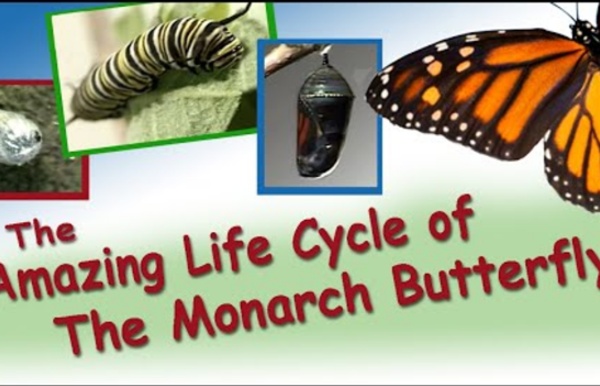



Plants and Animals, Science, Key Stage 1 Minibeasts A lovely site about minibeasts where children can about insects and the life cycle of a butterfly. It also looks at the concept of insect keys. Life Cycle of a Butterfly A simple drag and drop activity involving the completion of a diagram of the life cycle of a butterfly. Frog Life Cycle An illustrated account of the frog life cycle written with two text levels of difficulty. Life Cycle of a Frog A drag and drop activity involving the completion of a diagram of the life cycle of a frog. The Life Cycle of a Frog A narrated animation of the life cycle of a frog. Growing Plants Help Sparky the Alien with activities on growing plants which include labelling parts of a plant, finding out what a seed needs to grow and the life cycle of plants. Growing Plants 2 Activities based round the character Sparky the Alien on growing plants. Plant or Animal? A drag and drop activity where you need to sort different foods as to whether they come from a plant or an animal. Variation Lost Baby
Individual Panoramas: Panoramic Images: Smithsonian National Museum of Natural History Dr. Dave Pawson is a Senior Research Scientist / Marine Biologist with the museum’s Department of Invertebrate Zoology primarily studying echinoderms, especially sea urchins, sea cucumbers, brittle stars, sea lilies, and their relatives. Over the course of his career, he has completed field work in a great variety of marine habitats all over the world. One good reason Dave Pawson has been so successful in his 50 years at NMNH is that he is good at finding things. (Left photo: Dr. He will also search through drawers and drawers of collections to find that one missing specimen. Dave Pawson, c. 1973 And in pursuit of the animals he studies, he has made more than 100 dives in manned submersibles down to depths of more than two miles. To read more about his accomplishments and research in his 50 years at NMNH, follow the links below: Or to try and find what you were really looking for, use the search box below.
Art Lessons For Kids At Primary School - Art 4 My Room Finding Points On A Globe Finding Points On A Globe Now that we understand the shape and size of our planet, let's consider the difficult challenge of measuring and describing points thereon. How, for example, do we tell someone who lives on the other side of the Earth where another object is located? In order to both study and navigate the Earth, it is important to have a system for describing locations accurately and mathematically. The simplest method for describing locations either on a planet, or on any flat object, is to create a grid. But wait a moment. Because the Earth is rotating around an imaginary axis, we can define a top and bottom.
Online sites to support the teaching of PDHPE Self and relationships Relationships Australia Diversity Making Multicultural Australia is a website which brings together resources from the internationally recognised triple CD-ROM package of the same name and new resources and activities to support the implementation of NSW syllabuses. The web site provides a range of resources that could easily be incorporated into teaching and learning activities which inform students about Australia's cultural diversity and promote community harmony. Bullying, harassment and abuse Bullying. Racism: No way provides various lesson ideas and fact sheets are provided here. Movement skill and performance Women set to become fastest sprinters This online article provides an interesting perspective on the gains in performance historically of male and female sprinters. Mental health Reach Out! Staff Matters provides information and professional development ideas for staff health and wellbeing. Healthy food habits 8700 Find your ideal figure Nutrition Australia
Your Students Will Love MindPoint Quiz Show! « What’s New at Engaging Technologies MindPoint® Quiz Show presents ExamView® questions in a fun and engaging game show format. Students receive instant feedback (while having a hilariously competitive time), and teachers can track performance with a variety of reports. Quiz Show has graphics that appeal to elementary and middle school students, while its sister product Quiz Show SE is designed to appeal to older students (sample screens attached). The Quiz Show software works with ExamView tests and questions banks, as well as with CPS IR and RF response pads (Windows only). Contact us if you would like to see a demo of MindPoint® Quiz Show! Like this: Like Loading...
Sedimentary Rocks-A - Geology For Kids Sedimentary Rocks I Over the course of millions of years, the igneous rocks are weathered down by forces of wind and water. Fine particles of dirt begin to cover the landscape. Often, these small rock particles end up being suspended in water, and find their way to the bottom of lakes, streams, and the ocean. Slowly, the layer of sediment on the bottom of lakes, and especially on the bottom of the ocean grows deeper and deeper, reaching depths of thousands of feet. Solar System Scope Learn about Scientific Method Got a hunch about something but don’t know how to prove it? In this BrainPOP movie, Tim and Moby will walk you through the steps of the scientific method, which can be used to design any kind of experiment! First, Tim will show you how to make observations and develop inferences based on them. Watch the Science movie about Scientific Method »